Results 2,311 to 2,320 of 12095
Thread: Anandtech News
-
10-18-12, 08:30 AM #2311
Anandtech: Iomega StorCenter NAS Lineup Refresh: 2-bay px2-300d and 4-bay ix4-300d
Iomega's network storage family consists of three lineups:
- ARM-based EZ single-bay network attached hard disk for home users
- ARM-based ix series for value-focused consumers
- x86-based px series for performance-focused consumers (These come in both desktop and rackmount form-factors)
Today, Iomega is announcing two new NAS models, one each in the ix and px series. Traditionally, manufacturers have tended to focus their performance platform efforts on 4-bay and higher NAS systems. ARM-based systems make up the majority of the 2-bay offerings. However, huge amounts of data are being generated everyday even in the home (thanks to high resolution videos and photos, as well as movie backups and DVR recordings). This has opened up a market segment for 4-bay value offerings. Distributed SMB (small and medium-sized businesses) locations, in turn, have made small high-availability NAS systems with a performance emphasis necessary.
In order to cater to the performance market, Iomega is launching the px2-300d Intel Atom-based 2-bay model. Equipped with 2 GB of DDR3 memory, the unit supports hot-swapping of drives as well as volume encryption capabilities. The unit also has two GbE ports and comes with a customized version of McAfee Enterprise (with local scanning). A 3-year subscription for virus definitions is included. Pricing ranges from $500 for the diskless configuration to $1200 for the 2 x 3TB configuration. A point to be noted is that the disks shipped with the px2-300d are enterprise / server class drives.
The ix4-300d is equally interesting because it seems to be the first Marvell ARMADA XP based NAS system shipping to customers. The latest Marvell based refreshes we have seen from other manufacturers have all been based on the Kirkwood MV628x platform. The ix4-300d is based on a dual core 1.3 GHz Marvell SoC (MV78230 seems to be the likely candidate, though Iomega didn't confirm the exact part number). This unit also comes with dual GbE (something we see rarely in the value segment) and has 512 MB of DDR3 memory. Unlike the other 4-bay ARM-based NAS systems such as the Netgear NV+ v2, this model doesn't have hot-swap capabilities. Addition or replacement of disks requires a power cycle. Pricing ranges from $600 for the diskless configuration to $1300 for the 4 x 3TB configuration.
Both of the new NAS systems run the Iomega LifeLine OS. The latest version of the LifeLine OS has shifted the RAID filesystem from EXT3 to EXT4. Iomega indicated that this brought about higher efficiency. The new version has also apparently enhanced Active Directory support and added MySQL server support as well as video surveillance capabilities. Extra apps for the system are available here. The OS also allows linking of two StorCenter units in different locations for seamless cloud disaster recovery. The Iomega Link iOS / Android application allows mobile devices to access the NAS. The units are also DLNA certified.
We are particularly excited about the Marvell ARMADA XP based 4-bay system (ix4-300d). With Synology having thrown their weight behind Freescale this year, the competition amongst silicon vendors for the value-based NAS platform seems to be heating up.

More...
-
10-18-12, 11:30 AM #2312
Anandtech: Memory Performance: 16GB DDR3-1333 to DDR3-2400 on Ivy Bridge IGP with G.S
Memory reviews are, in my opinion, actually quite hard to do.  There are plenty of memory kits available that are nice and cheap, and the easy way to differentiate between them in a review is usually though synthetics – without too much effort we can find memory comparison articles online that deal solely in synthetics.  The downside of synthetics is that they rarely emulate real-world performance.  When the requests came in for a comparison of memory kits available on the market, I was stumped to find real-world examples where memory truly matters by significant margins, and benchmarks to match.  Fast forward a month or so, and we have compiled a series of tests taking advantage of some of the most memory limited examples common to most users – IGP performance using memory from DDR3-1333 to DDR3-2400.  Inside this review we have also mixed in some encoding, compression, and you may be surprised to hear that USB 3.0 performance is also affected by memory speed.  In this article we also look at and review the memory kits that G.Skill has gracefully provided from their Ares, Sniper, RipjawsX, RipjawsZ and TridentX brands.

More...
-
10-18-12, 08:30 PM #2313
Anandtech: AMD Q3 2012 Earnings: $157M Loss; 15% of Workforce To Be Cut
Picking up from where we left off with Intel, earnings week has continued to roll along with most of the major tech companies having reported their Q3 earnings. As we noted in our look at Intel’s earnings, Intel is the traditional bellwether for the PC industry, and for Q3 that bellwether was reporting that the PC market had unquestionably grown weaker, and that Q4 was to be cast into even more doubt. As one of the strongest PC-centric tech companies Intel has significant exposure to any weakness in the PC market, but at the same time they’re also in the best position to weather whatever may come. For their partners and their competitors however, a weak market can be a significantly bigger drain.
This brings us to today’s major PC earnings announcement: AMD. AMD is by far the weaker CPU manufacturer, and while it has some level of diversification through its GPU division and embedded CPUs, like Intel they’re still significantly exposed to the PC market, setting the stage for a rough quarter. Furthermore rumors began circulating that AMD was looking at another round of layoffs – rumors that have seen been proven at least partially correct – which would indicate that AMD was struggling even more than anticipated. With these factors in mind there has been a great deal of anticipation for AMD’s Q3 earnings call, so let’s dive right in.
For Q3 of 2012 AMD reported $1.27B in revenue, with a net loss of $157M. Unfortunately for AMD (but not unexpected) this is a significant drop in both revenue and net income on both a quarterly and yearly basis, having furthermore pushed AMD back into the red after turning a slight profit in Q2. Compared to AMD’s Q3 2011 results, revenue is down approximately $420M, a nearly 25% drop; net income meanwhile swung from positive $97M to negative $157M, a shift of nearly $250M. Finally, AMD’s gross margin was an abysmal 31%, well below last year’s gross margin of 45%, which is generally where AMD needs to be to turn any kind of profit.
The single biggest factor for this sudden change in fortunes is a $100M inventory write-down AMD had to take this quarter for unsold Llano inventory. In Q3 of 2011 Llano was the biggest factor in AMD turning a profit, but a year later those chips have been superseded by AMD’s new Trinity APU. Notably AMD is calling this a write-down and not a write-off, so it looks like they’re accounting for the loss of value of these APUs (i.e. they’ll have to sell them at lower prices than they planned for), as opposed to simply throwing out $100M in Llano APUs. Nevertheless, even if AMD had not taken the write-down they still would have lost around $50M for the quarter, so while Llano inventories were a big problem for AMD they are not the sole reason for AMD’s rough quarter.AMD Q3 2012 Financial Results   Q3'2012 Q2'2012 Q3'2011 Revenue $1.27B $1.41B $1.69B Net Income -$157M $37M $97M
Breaking down AMD’s numbers for the quarter, AMD’s Computing Solutions (CPU/APU) segment booked $927M in revenue, for an operating loss of $114M. This represents a 28% decline in revenue on a yearly basis, and like AMD’s overall profitability a flip from an operating income to an operating loss for the division. AMD looks to have been hit twice here; not only are overall sales lower, but their ASPs were also down.
AMD doesn’t completely break down their CPU revenue by processor line, but they have stated a few facts. For client revenue (i.e. non-server) desktops were cited as being especially hard hit by lower sales volumes and ASPs. As for notebooks, AMD has stated that Trinity’s share of AMD notebook shipments has just surpassed 30%, which implies that the majority of AMD’s notebook APUs are still Brazos and Llano.AMD Q3 2012 Computing Solutions Division Financial Results   Q3'2012 Q2'2012 Q3'2011 Revenue $927M $1.04B $1.28B Operating Income -$114M $82M $149M
Meanwhile AMD’s Graphics division fared much better. For the quarter the Graphics division booked $342M in revenue, and once again turned a small but consistent operating income of $18M. This represents a 14% reduction in revenue over Q3 of 2011, while operating income has actually grown by $6M. AMD attributes the lower revenue to lower OEM sales, but noted that channel sales (i.e. retail) are higher than at this point last year. Interestingly despite the loss of revenue AMD’s GPU ASPs were also up compared to Q2, which is why they turned a greater operating income on lower revenues. Unfortunately as we’ve seen time and time again with AMD, while their Graphics division can consistently turn a small profit, at only 1/3rd the revenue of their Computing Solutions division it’s not nearly large enough to offset the losses AMD has run there.
With all of that in mind, as bad as AMD’s Q3 was, much like Intel their projections are for Q4 to be even worse. Unlike Intel AMD doesn’t provide gross margin guidance, but for their revenue guidance they are predicting a further 9% (+/- 4%) decline in revenue.AMD Q3 2012 Graphics Division Financial Results   Q3'2012 Q2'2012 Q3'2011 Revenue $342M $367M $403M Operating Income $18M $31M $12M
This brings us to perhaps the most depressing news of the day: more layoffs. As part of their restructuring plan to return to profitability, AMD will be laying off nearly 15% of its workforce in Q4. They expect to take an $80M charge on this for severance payments, in return for $190M in projected savings in 2013. AMD is being intentionally vague about where these layoffs will come from, and it’s entirely possible they haven't completely figured that out at this time, so at this point it’s impossible to say if this will primarily hit one division (e.g. GPUs) or if it will be spread around all of AMD’s major divisions.
The layoffs are coming as part of a greater restructuring for the company, which will see them accelerating their previously announced shift away from the PC market in favor of mobile, servers, and semi-custom embedded chips. As the PC market continues to weaken – and AMD expects it to remain weak for several more quarters – they will be speeding up this transition in order to derive more of their revenue from non-PC sources sooner. Ultimately AMD wants to be in a position where 40-50% of their revenue comes from these fast-growing markets, with a specific goal of 20% of their revenue coming from semi-custom embedded APUs by Q4 of 2013.
To get there AMD will be simplifying their development cycles and increasing their focus on building reusable IP blocks, in essence transitioning to building their APUs in a more SoC-like fashion. AMD has been very careful to reiterate that they’re still an engineering company, and that graphics in particular are a cornerstone of the company. But much like the vague nature of the layoffs they are not making it clear what projects and products are being deprioritized or discontinued in order to achieve this simplification. What is clear is right now is that AMD will be reusing more IP and designs when they can to avoid having to undertake costly research and development.
Finally, AMD has also spent a bit of time talking about 2013 and beyond. On a financial side of things AMD’s goal is to get their operating costs to the point where a quarterly revenue of 1.3B would be their break-even point, which is part of AMD’s attempt to “reset” the company to survive on what would ultimately be lower margins. Meanwhile on the product side of things, silicon for Kabini (their 28nm Brazos replacement) is already back and AMD is working on a H1 2013 launch for that. As it stands nearly 85% of AMD’s current business is focused on the “legacy” PC market, so AMD is looking to shift into high margin, fast growing markets like tablets as soon as possible, which is where products like Kabini will take them.

More...
-
10-18-12, 10:00 PM #2314
Anandtech: Google Reboots The Chromebook: ARM Meets Notebook For $249
Google's been known to throw the spaghetti at the wall to see what sticks. And for every GMail and Android, there's a Wave and Buzz. At best, Google's Chromebook initiative is valiantly clinging to the wall, lost ground not withstanding. Today, they've unveiled their latest Chromebook collaboration with Samsung, and it's frankly quite exciting. The 11.6" notebook weighs in at just 2.5 lbs, and gets to be the first device sporting Samsung's Exynos 5 Dual (5250). Sound familiar? That would be the first ARM Cortex-A15 SoC to show up in a commercially available device, and the first PC to feature neither Intel nor AMD. 
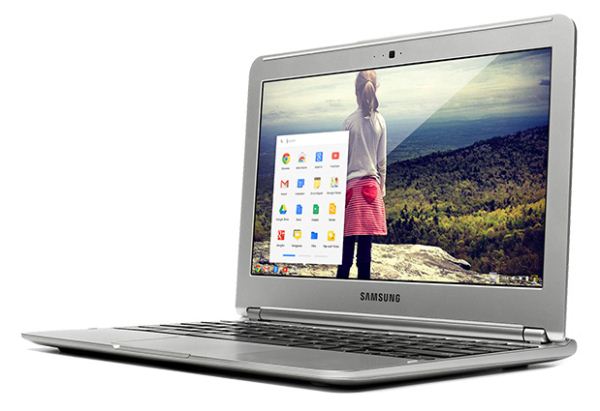
The rest of the specs are relatively modest, the 11.6" panel has a respectable 1366x768 resolution, a VGA camera, SD card slot, one each USB 3.0 and USB 2.0 ports, and an HDMI port. Bluetooth and WiFI are built-in, though this generation foregoes the 3G modem of the first Chromebook. Some noise has been made about the quoted 6.5 battery life; we've never taken too much stock in PR provided data. The Cortex-A15 can be a power hungry SoC when stressed, and there's no details on battery capacity, so we'll have to handle the hardware ourselves to size up the battery life. 
 
The SSD is a zippy but small 16GB, but local storage isn't really the point of a cloud-centric Chromebook. And to help allay storage fears, Google's including 100GB of Google Drive capacity for 2 years, with the the purchase of the $249 laptop. That additional cloud storage sweetens the value of the device, too; paying for the service out of pocket would cost $120 over the two year span. So, is this the Chromebook that will finally win us over? We'll find out soon, preorders start today, and sales start Monday.
Gallery: Google Reboots The Chromebook: ARM Meets Notebook For $249






More...
-
10-20-12, 07:30 PM #2315
Anandtech: SilverStone Sugo SG09 Case Review: Someone at SilverStone Loves Tetris
You've seen it here: small cases are getting big. Mini-ITX boards are becoming both more common and less expensive, and there's been a bit of a renaissance for small case designs. This is a space SilverStone has served reasonably well for some time now with their Sugo line of enclosures, but a healthy amount of thunder was recently stolen by BitFenix's Prodigy case. It's true the Prodigy is an excellent design, but admittedly it's unusually large for a Mini-ITX enclosure and there are some things BitFenix could improve upon.
Meanwhile, SilverStone is content to let their Sugo line to continue serving the Mini-ITX market and serving it well, but today they have an option that's intended to appeal to users looking for a small form factor machine without compromising. The Sugo SG09 is aimed at cramming as much powerful hardware and a Micro-ATX motherboard (instead of Mini-ITX) into a space typically reserved for already cramped Mini-ITX hardware. Does it succeed? As it turns out, it does, and then some.

More...
-
10-21-12, 11:30 PM #2316
Anandtech: 120mm Radiator Fan Roundup Part 2: Fan Harder
It's funny, when I did the first 120mm radiator fan roundup two months ago, I wasn't expecting quite the response it got. It was an interesting exercise that seemed worth sharing with the rest of you, and as it turned out, I was mostly right. What I wasn't prepared for was the avalanche of responses from both you and from vendors about the fans that were tested, or more appropriately, the fans that weren't tested. It was obvious there needed to be another run of fans, and that's just what I've done.
Ten new contenders; some pulled from my own stock, one pulled from retail, and some graciously and generously sent by vendors. The results from these fans will be added to what will wind up being absolutely massive comparison charts. There's an entrant from Scythe, Noctua's gold standard NF-F12, the Enermax Magma, and even a couple contenders from Cooler Master and Rosewill. Is there something available that's a better choice for Corsair's H80 120mm radiator, or are the stock fans still the most well-rounded option?

More...
-
10-21-12, 11:30 PM #2317
Anandtech: AMD's Holiday Plans: Catalyst 12.11 Performance Driver & New Holiday Game
As October winds to a close, the consumer electronics industry is making its final preparations for the holiday shopping season. Among events this week will be the Windows 8 launch – which itself includes a bevy of new computers and tablets – an Apple product refresh, and some other things that should surprise us all. The video card industry is no different, and with AMD and NVIDIA having wrapped up their product launches earlier this month, the focus shifts to competitive positioning of existing products through the rest of the year.
AMD’s holiday plans will be taking a two-pronged approach. The first prong (and likely to be the greater interest to most of our readers) will be the release of a new performance-optimized driver branch for AMD Graphics Core Next hardware. The second prong will be what can only be described as an incredibly aggressive series of game bundles, with AMD capitalizing on their much improved developer relations offering vouchers for multiple different games. By improving their performance relative to NVIDIA, maintaining existing aggressive pricing, and by further tilting the value proposition their way through better bundle, AMD is going all out for the holidays in a way we haven’t seen in years.
Catalyst 12.11 Performance
We’ll kick off this quick look at AMD’s holiday plans with a look at AMD’s new driver. AMD’s official designation for this driver will be Catalyst 12.11 (9.10.8), which is based off of a newer code branch than AMD’s previously released Catalyst 12.9 driver (9.1.0.0). AMD has sampled an early beta to the press ahead of today’s announcement, and they will be posting a slightly newer build of this driver publically at around 3pm today, with a final WHQL release slated to appear next month.
So what does Catalyst 12.11 bring to the table? In short this is the 3rd major performance driver for the GCN architecture, building upon the gains AMD already picked up from Catalyst 12.2 and Catalyst 12.7. Like those previous drivers, AMD has been working on a mix of game specific optimizations and across-the-board optimizations to better utilize the GCN architecture. While there’s no such thing as a “regular” release schedule for these kinds of major performance drivers, it’s rare to see 3 major drivers in a single calendar year, so this ended up being a pleasant surprise.
To get an idea of the performance of AMD’s new drivers and how it compares to earlier drivers, we’ve charted the performance of the Radeon HD 7970 (Tahiti), Radeon HD 7870 (Pitcairn), and Radeon HD 7770 (Cape Verde) against the 12.11 drivers, the 12.7 drivers, and their respective launch drivers. For the 7970 this means going back to the very start of GCN (Dec 2011), while the 7870 and 7770 launched with drivers based off of Catalyst 12.2.
At 1920x1200 we’re seeing a roughly 5% across the board performance improvement for both the 7970 and the 7950. Everything except Starcraft II sees at least a marginal improvement here, with Starcraft II being the lone exception due to the previous issues we’ve run into with the 1.5 patch. The 7770 also sees some gains here but they aren’t quite as great as with AMD’s other cards; the average gain is just 4% at 1680x1050, with gains in individual games being shallower on the 7770 than they are on other cards.
Interestingly even on the 7970 the largest gains are at 1920x1200 and not 2560x1600. The latter is the more GPU-limited resolution and that’s where we’d typically expect to see the largest gains, but that’s not what’s happening here. Most likely AMD’s performance improvements are targeting shading/texturing performance rather than ROP/memory performance, in which case the highest resolutions where we’re already more likely to be ROP/memory bound would be the resolutions least likely to benefit. This isn’t necessarily the best outcome since it’s at the highest resolutions that we need the greatest performance, but since most gamers are still on 1920x1080 (even with cards like the 7970) this is admittedly a more useful outcome.
Meanwhile like most major performance drivers, even when performance is up across the board the biggest gains are seen in a handful of games, and Catalyst 12.11 is no exception. Among the games in our test suite, DiRT 3, Shogun 2, and Battlefield 3 see the greatest improvements, with the former two picking up 6-7% each.
But it’s Battlefield 3 that really takes the cake: the performance improvement from Catalyst 12.11 ranges from 13% for the 7770 at 1680 to a whopping 29% for the 7970 at 1920. This makes Catalyst 12.11 a very special driver for AMD – not only are performance improvements over 20% particularly rare, but Battlefield 3 has long been a thorn in AMD’s side. NVIDIA’s hardware has until now always outperformed AMD’s equivalent hardware here, and as BF3 has remained an extremely popular MP game it’s been one of the most important games for high-end video card buyers. In other words it has always been the game AMD could least afford to lose at.
With the 12.11 drivers AMD has completely eradicated their performance defecit in BF3, with the 7970, 7870, and 7770 being made performance competitive with (if not a hair faster than) their respective NVIDIA GTX 600 counterparts in our BF3 benchmark. AMD has told us that the specific performance benefits are map-dependent with our results appearing at the high-end of their guidance, so while not every map will see the same 20%+ performance gains, some of them will while others will be in the 10% range. Much like our overall performance averages, the largest gains are at 1920 with FXAA, while 2560 with FXAA and 1920 with MSAA will see smaller gains, once again hinting that AMD’s optimizations are on the shader/texture side rather than ROP/memory.
For our part we have long theorized that the Frostbite 2 engine’s heavy use of deferred rendering techniques – particularly its massive G-buffer – was the factor that AMD was struggling with. While these results don’t really further validate or invalidate that theory, what is clear is that AMD has fixed their Frostbite 2 performance problem. Given the fact that Frostbite 2 will be used in at least a couple more games, including the AMD Gaming Evolved title Medal of Honor Warfighter, this was an important engine for AMD to finally conquer.
For their part, AMD hasn’t told us much about what it is they’ve done to optimize their drivers. What we do know is that it’s not driver command lists (an optional DX11 feature that NV has supported for some time), so it has to be something else. AMD has briefly mentioned surface mapping and memory mapping optimizations, but it’s not clear what exactly they’ve done there and if those are the only optimizations.
Finally, these seem to be clean optimizations, as image quality has been held constant in most of our games (e.g.: Battlefield 3). The sole exception is Skyrim, and this is something we’re certain is an unrelated bug. On our 7970 we appear to be missing a lighting pass, but only on our 7970. On our 7870 with the same exact settings everything is being rendered correctly. AMD has told us that they haven’t seen this issue in-house (it would admittedly be hard to miss) so this may be some esoteric issue; due to the short preview window and our own testing time constraints AMD hasn’t had time to look into it further.
Holiday Game Bundles
As we mentioned before, the second prong of AMD’s holiday strategy will be a rather significant holiday game bundle. Both AMD and NVIDIA have been making a greater focus on game bundles this year, and for the forthcoming holiday AMD will be going all out. Typically we see AMD bundle a single AAA game, or in the case of the Three For Free promotion earlier this year one AAA game along with a couple of cheaper games; for the Never Settle Game Bundle promotion however AMD will be bundling upwards of three AAA games with their most expensive cards.
The terms of the Never Settle Game Bundle can be a bit confusing, so let’s start with a chart.
AMD will be offering games as part of the Never Settle Game Bundle with the 7770, the 7800 series, and the 7900 series. Depending on the card, AMD will be offering Far Cry 3, Hitman: Absolution, and Sleeping Dogs as free games through retailer vouchers. Furthermore they will also be offering a 20% off ($10) voucher for Medal of Honor Warfighter. Ultimately every card that is part of this bundle comes with the MoH voucher and Far Cry 3, purchasing a pair of cards for Crossfire will add in Hitman, and purchasing any 7900 series card will add in both Hitman and Sleeping Dogs.
AMD is hitting the bundles hard this year not only to steal some business from NVIDIA but as with past bundles to offer more value without actually having to cut video card prices. AMD of course pays a fraction of the retail price for these games, so offering three games for a “value” of $170 of course costs them far less than the sticker price. Still, for the 7900 series in particular this is a larger, more valuable bundle than anything else we’ve seen from AMD in recent years. Combined with their prices and improved performance, it will put NVIDIA on the defensive since NVIDIA does not have an active bundle on anything other than the GTX 650 Ti at the moment.
Like always however, the value of the bundle will be in the eye of the buyer. A bundle is not the same a price cut, so these bundles will have the greatest value for buyers who are already interested in the games. To AMD’s credit they’re focusing on games that have yet to be released, minimizing the number of buyers who might already have the game with the tradeoff being that the last game in the bundle won’t be out until the end of November.
Finally, like AMD’s previous bundles this is a retailer/e-tailer driven offer, buyers need to be sure to check whether their store of choice is offering the bundle. AMD hasn’t set a hard date on when the bundle will go live, and since their marketing department is typically ahead of their promotions department by a week or two we’d expect to see these bundles finally become active in November.
Pricing
As we mentioned before, AMD will not be making any further price adjustments for the holidays, with the game bundles intended to offset any need for price adjustments. As a result AMD’s pricing is roughly the same as it was earlier this month with the launch of the GeForce GTX 650 Ti. The 7970GE is priced against the GTX 680, the 7970 against the GTX 670, the 7950 against the GTX 660 Ti, the 7870 against the GTX 660, the 7850 ahead of the GTX 650 Ti, and the 7770 slightly ahead of the GTX 650. Given the combination of prices and game bundles, AMD is clearly intending to squeeze NVIDIA this year.
 Fall 2012 GPU Pricing Comparison AMD Price NVIDIA Radeon HD 7970GE $449 GeForce GTX 680 Radeon HD 7970 $389/$369 GeForce GTX 670 Radeon HD 7950 $309/$289 GeForce GTX 660 Ti Radeon HD 7870 $229/$219 GeForce GTX 660 Radeon HD 7850 2GB $189   Radeon HD 7850 1GB $169 GeForce GTX 650 Ti 2GB Radeon HD 7770 $109 GeForce GTX 650 Radeon HD 7750 $99 GeForce GT 640

More...
-
10-22-12, 04:30 PM #2318
Anandtech: AMD’s 12.11 Mobility Catalyst: Enduro Hotfix [Mostly] Included
We already posted our overview of the 12.11 Catalyst drivers when used with desktop GPUs, but notebook users are naturally wondering where the promised mobile Hotfix driver is. The short story is that AMD decided to roll the Hotfix into the 12.11 release, so this driver takes care of both mobile and desktop users. The usual caveats for notebooks apply, obviously: your laptop needs to use either a discrete-only GPU or support dynamic switchable graphics aka Enduro, and the laptop manufacturer needs to be a participant in AMD’s mobile drivers program. I’m not sure what companies are specifically opting out, but at least the beta driver I tested installed on a Sony VAIO C (more on this below).
With the official release in hand, we went back to verify performance was the same as the 12.9 Hotfix we had tested previously. In the process of testing, we found things were not quite where we expected, but then AMD contacted us to let us know there was a slight snafu with the 12.11 driver: it doesn’t include the DX9 portion of the Hotfix (which, if you missed it, we had to manually install the DLLs in safe mode with the not-for-public driver). That’s unfortunate, as it potentially means any DX9-only games will underperform relative to the earlier Hotfix, but that’s not the end of the story.
Besides the apparent DX9 snafu, we also ran into issues with several games no longer working properly. DiRT 3 and DiRT Showdown both refuse to run in fullscreen mode with the 12.11 beta, which makes comparing performance with the previous scores largely useless (windowed mode is always going to be slower, in my experience). Battlefield 3, which received a large performance boost on desktops with the 12.11 drivers, also refuses to run—it crashes/hangs almost immediately after launching. (It might be the same fullscreen bug as in the DiRT games, but there’s no XML config file to tweak to change settings so basically I’m unable to test BF3 at present.)
Of the remaining games, we found minor differences in performance but nothing really worrisome; if you’re still running the original Clevo 7970M drivers, the Hotfix should be a dramatic step up in performance. What about other non-7900M laptops, though? As mentioned above, I installed the 12.11 beta from AMD on the Sony VAIO C (PowerXpress 4.0/Dynamic Switchable Graphics) and that worked “okay”; the issue is the same as with the 12.9 Beta driver: the “Global Switchable Graphics” settings are missing. I’m not sure how much the new drivers help performance with other GPUs, but a quick look at performance on the VAIO C suggests that only GCN GPUs are likely to show noteworthy improvements.
Here’s the quick rundown of our testing results at our “Mainstream” (900p ~High) and “Enthusiast” (1080p ~Ultra 4xAA) notebook test settings, showing four sets of drivers: the initial Clevo driver (8.951.6, which is close to the 12.3 Catalyst drivers), the 12.9 beta, the 12.9 Hotfix, and the 12.11 beta.
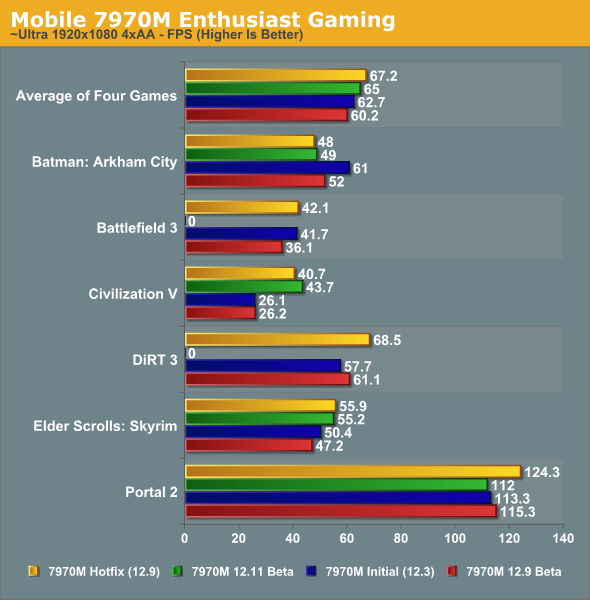
Performance is down slightly from the Hotfix internal release, but that’s not too surprising given the missing DX9 support. Note also that we dropped BF3 and DiRT 3 from the averages, since they wouldn’t run with the 12.11 release. Overall, our Mainstream settings show a pretty clear benefit from the Hotfix/12.11 drivers, while the increases at our Enthusiast settings are less dramatic but still tangible in most titles.
As for availability, we’re still waiting for the public drivers to post, which should occur sometime in the next couple of hours—we’ll update with a link when AMD pushes them live. AMD also informs us that they’re working to push out a fixed mobile driver “shortly” that will include the DX9 improvements as well. I would hope that will bring the 12.11 release to the performance level of the 12.9 Hotfix, and hopefully AMD can address the issues we noted in DiRT 3/Showdown and Battlefield 3 at the same time. (AMD did mention that they test both titles internally, though not on a Clevo P170EM, so we might be seeing a glitch specific to our notebook model in those games.)
Looking at the bigger picture, this release shows that AMD can push out public drivers for mobile platforms, including Enduro systems, but we’re still seeing some disconcerting trends with overall mobile platform support. We want the next official release to clean up the drivers on all Enduro/Dynamic notebooks (e.g. Sony VAIO C and HP Envy 15, to name two specific models where we’ve heard the same “missing Global Switchable profiles” complaint), and it would be great if we didn’t see any oddities with games like DiRT 3 and Battlefield 3. NVIDIA hasn’t been free of such issues, but given the number of Optimus laptops we’ve tested compared to Enduro we’ve encountered problems far less frequently. Here’s hoping 2013 can be the year where we no longer have to delve into the question of which AMD notebooks work properly with AMD-provided drivers.

More...
-
10-23-12, 01:30 AM #2319
Anandtech: The Vishera Review: AMD FX-8350, FX-8320, FX-6300 and FX-4300 Tested
Last year's launch of AMD's FX processors was honestly disappointing. The Bulldozer CPU cores that were bundled into each Zambezi chip were hardly power efficient and in many areas couldn't significantly outperform AMD's previous generation platform. Look beyond the direct AMD comparison and the situation looked even worse. In our conclusion to last year's FX-8150 review I wrote the following:
"Single threaded performance is my biggest concern, and compared to Sandy Bridge there's a good 40-50% advantage the i5 2500K enjoys over the FX-8150. My hope is that future derivatives of the FX processor (perhaps based on Piledriver) will boast much more aggressive Turbo Core frequencies, which would do wonders at eating into that advantage."The performance advantage that Intel enjoyed at the time was beyond what could be erased by a single generation. To make matters worse, before AMD could rev Bulldozer, Intel already began shipping Ivy Bridge - a part that not only increased performance but decreased power consumption as well. It's been a rough road for AMD over these past few years, but you have to give credit where it's due: we haven't seen AMD executing this consistently in quite a while. As promised we've now had multiple generations of each platform ship from AMD. Brazos had a mild update, Llano paved the way for Trinity which is now shipping, and around a year after Zambezi's launch we have Vishera: the Piledriver based AMD FX successor.
Read on for our full review!
More...
-
10-23-12, 11:00 AM #2320
Anandtech: Apple's iPad mini Event Live Blog
We've lined up and are getting ready to bring you live coverage from Apple's special event today. Widely expected to make an appearance are the iPad mini as well as the 13-inch Retina MacBook Pro. We'll have live updates from the event here starting at 10:00AM Pacific (1PM Eastern).

Stay tuned!

More...
Thread Information
Users Browsing this Thread
There are currently 10 users browsing this thread. (0 members and 10 guests)





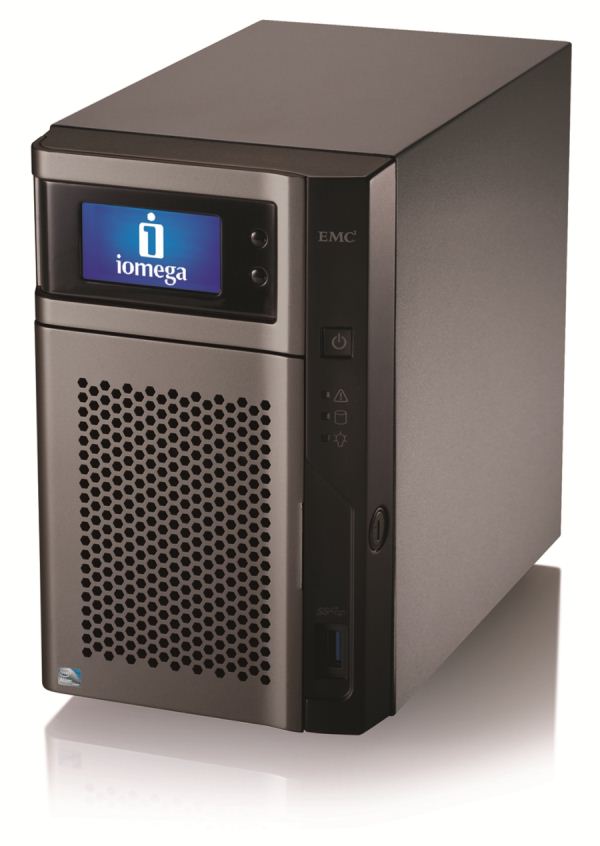
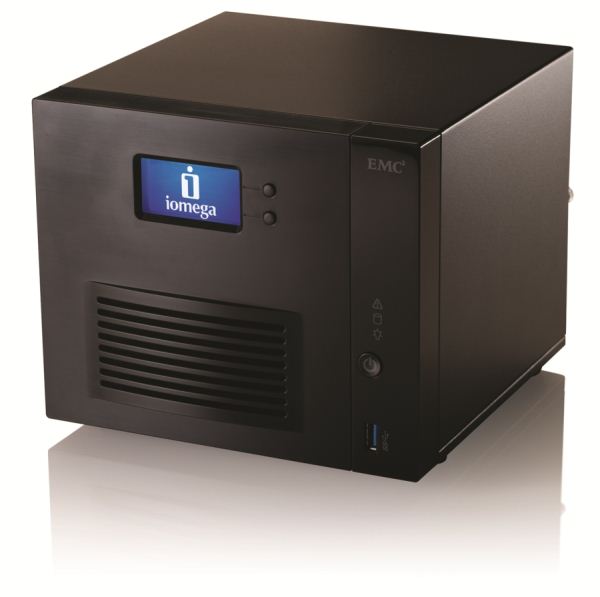



 Quote
Quote

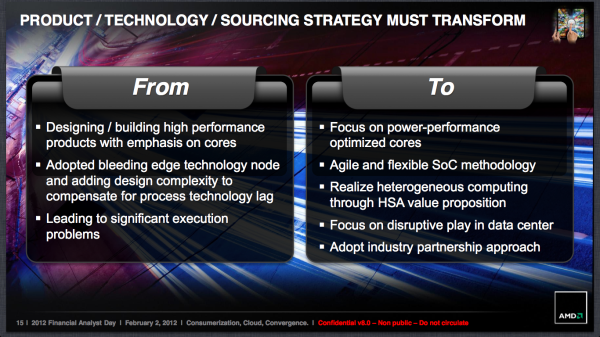
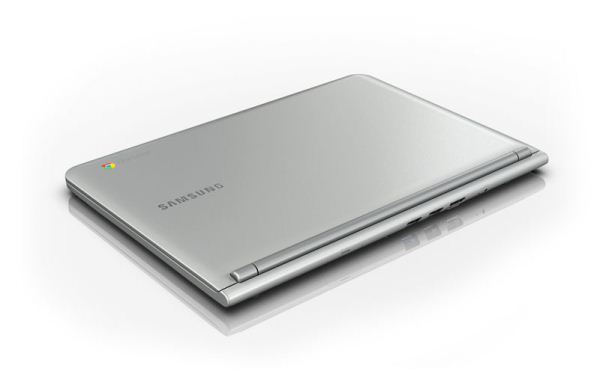
.jpg)
.jpg)
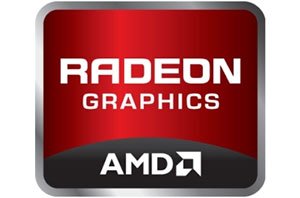
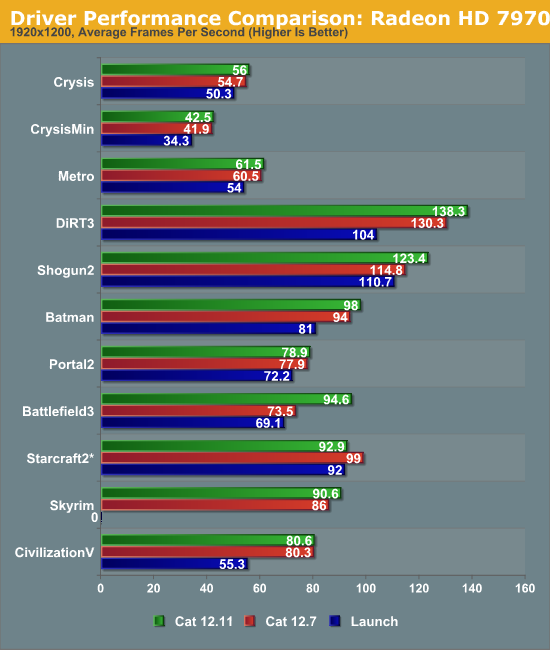
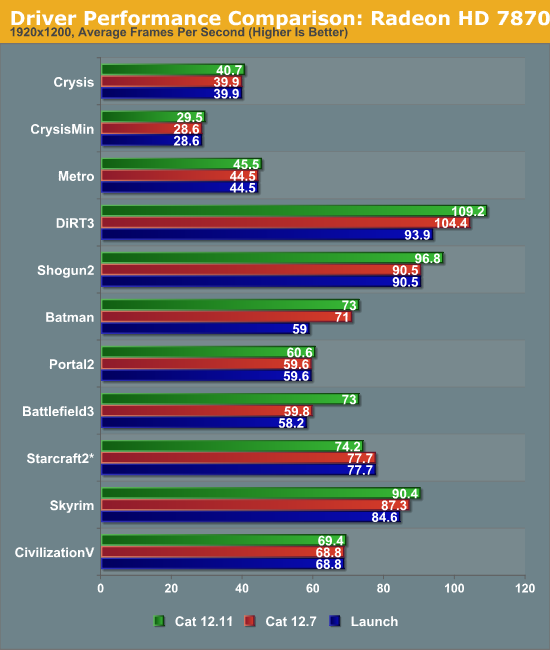
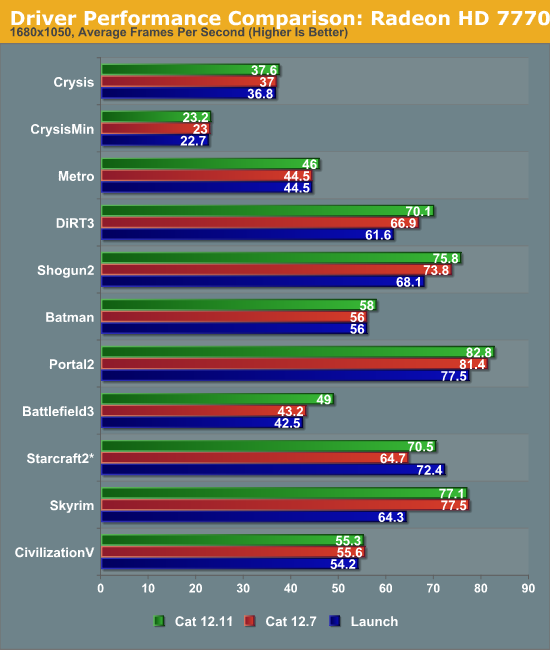
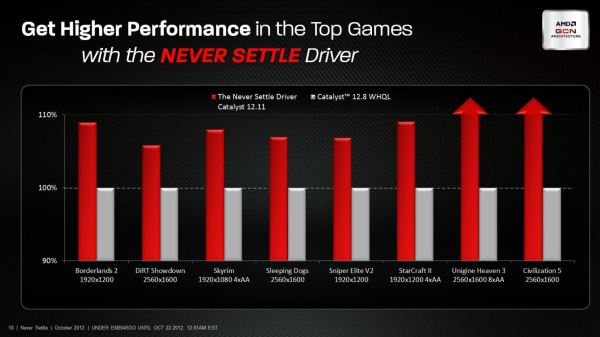
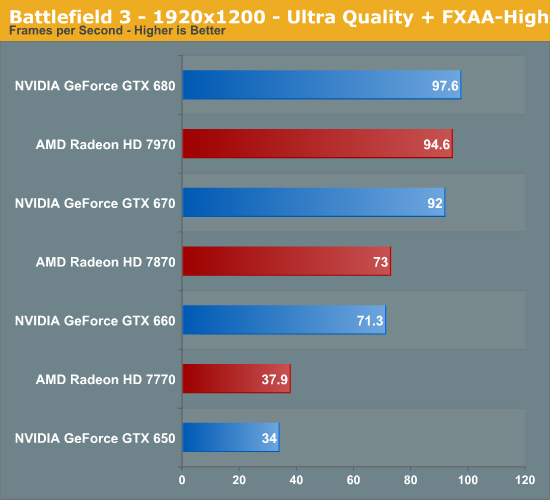
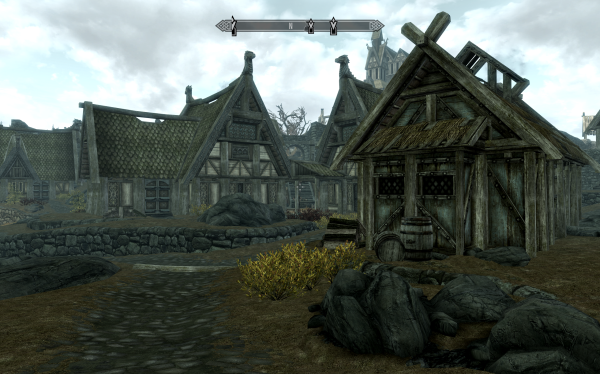
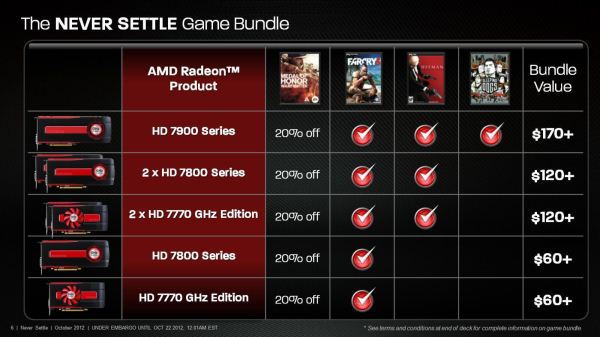
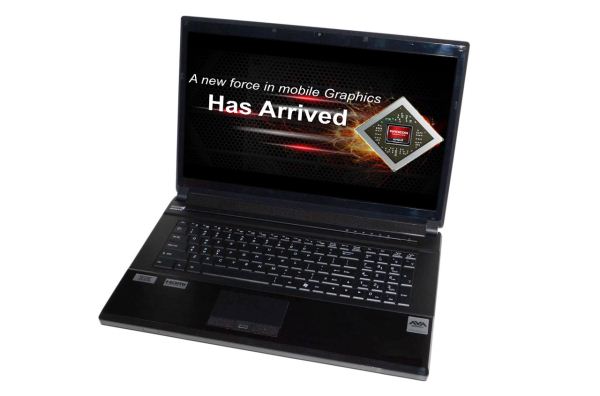
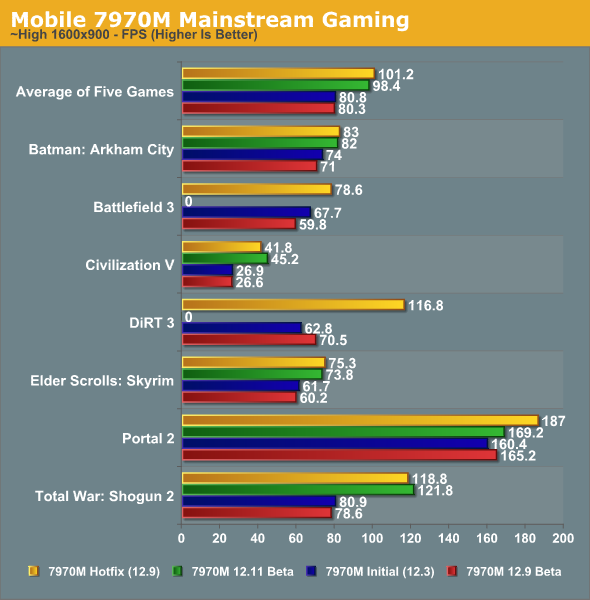
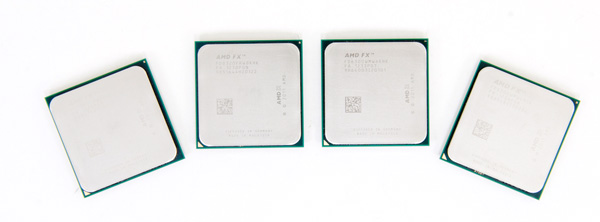
















Bookmarks